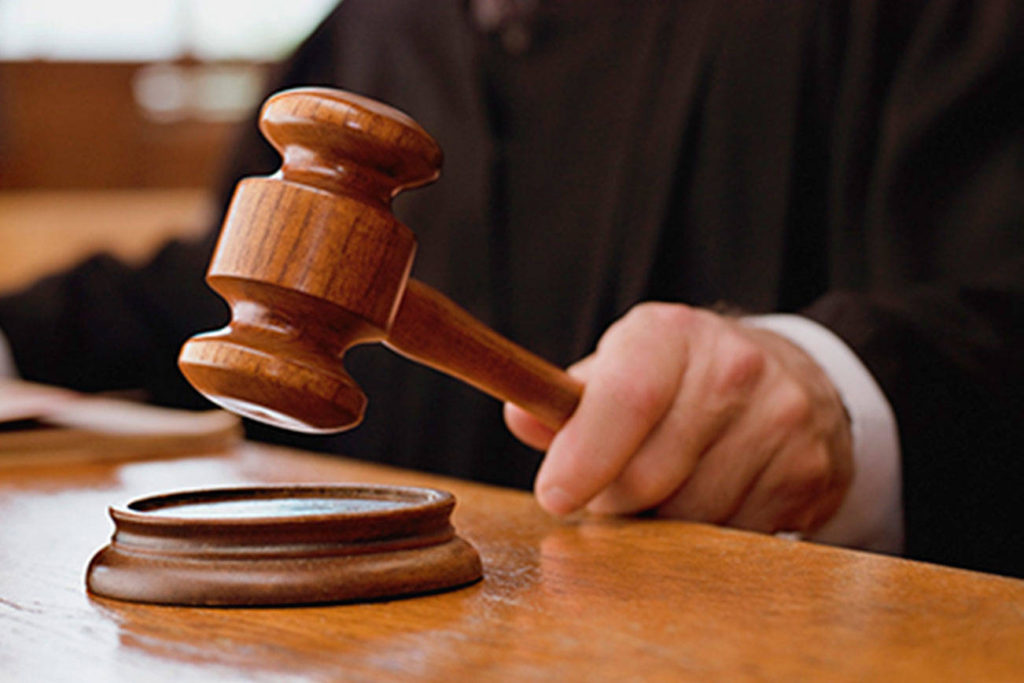“When the going gets tough, the tough get going.”
It is these extraordinary times when the Constitution needs to demonstrate its mettle. The citizens do not expect the Supreme Court or the High Courts to eliminate every hitch affecting their lives but to at least stand as a custodian of fundamental rights and directive principles of State policy with a regular check on the accountability and the responsibility of the State. However, the Courts have found themselves in a state of perplexity over their course of action. The recent decrease in judicial friction with the Legislature and Executive is an awful sign for a functional democracy. The step-motherly treatment of Kashmiris, wanton detentions under the Unlawful Activities Prevention Act (UAPA) and National Security Act (NSA) turning a blind eye towards millions of migrant labourers transferring judges advocating dissent towards the administration rendering imperative Habeas Corpus petitions ineffectual, systematic suppression of Anti-CAA (Citizenship Amendment Act) and National Register of Citizens (NRC) protests, and breeding Xenophobia amongst the youth is the menu that judicial authorities and legal enforcement mechanisms are offering in these demanding times. The administration cannot carry out these operations without the sanction of law. This is where romanticism between the Courts and the Government enters the picture.
This romantic picture must be dubbed as explicit content for every citizen looking up to the Constitutional Courts with aspirations in this country. This worrisome arrangement has opened up a critical question in my mind that I shall address in this article. What steps could be taken to eliminate atrocities on marginalized and vulnerable sections of the society in this predicament?
The Indian Constitution is a knight in shining armor for citizens against violations of fundamental rights. Article 14 and 21 are available to all “persons” that includes non-citizens as well. However, the scope of these brief articles is extensive. What the State often tends to forget is that every decision is subject to judicial review, and any impingement on fundamental rights can be challenged before the Court.
The legal developments post the order of 13th November 1962, which suspended the rights under Articles 21 and 22 when divested by the Defence of India Ordinance, 1962 shook the entire country, and Constitutionalism became a shaggy-dog-story. This absurd lacuna in our Constitution kept getting gargantuan. The emergency of 1975-77 turned out to be a scathing attack on the Constitutional rights of the citizens. The Constitution (44th Amendment) Act, 1978, was introduced as a guardian angel. It restricted the scope of Article 359 by making Article 20 (the right to protection in respect of conviction for offenses) and Article 21 (right to life and personal liberty) enforceable even during the emergency. Therefore, any further violation of Constitutional rights would remain open for judicial review. A lockdown for more than 1.3 billion people is in no terms less than an emergency.
The Supreme Court has been vocal about its non-intervention in policy matters. However, numerous precedents say otherwise. It has manufactured binding policies for manifold and diverse areas. From developing guidelines regarding sexual harassment at the workplace to providing a scientific explanation against the usage of CNG to detailed guidelines about the rights of arrestees and accused, the Supreme Court has done it all. The arguments for non-intervention in policy matters does not stand because the above cases dealt with policy issues that were duly meant to be handled by the Legislature and the Executive. Constitutionalism can only prevail when the Courts keep a close eye on the decisions of the Executive and the Legislature.
The upcoming portion is divided into three phases- Preparatory, Response, and Recovery. I shall list down certain actions that the Court could have taken in this pandemic for better functioning and accessible justice.
PREPARATORY PHASE
Instituting a particular litmus test for ‘Target Litigation’ and minimizing traditional court procedures- The justice sector must act as a bridge between several local bodies and the administration. Domestic violence against women and children, victimization of migrant laborers and workers, crushing protest movements under draconian laws by serving prima-facie detentions, etc. are on the surge. When the litigators practice target litigation, cases are automatically prioritized, and the people worst affected by the crisis are served fair and efficient justice. The prayers should include temporary injunctions, specific reliefs, restraining orders, and other instant directives. This would reduce the deferral of important matters and would account for a fast forward judicial process.
Utilizing technology and following health protocols with a special emphasis on conferring protective equipment- With the citizens requiring the Courts more than ever, shutting down its functioning is never an option. This is why several judicial and quasi-judicial bodies, including the Apex Court, have turned online. The Supreme Court on 6thApril 2020 passed a slew of directions for efficiently conducting judicial proceedings in the online mode. However, technology must not be confined to video-conferencing but can serve broader purposes such as sending summons, notices, orders, reliefs, etc. through electronic mails. The transition would have been easier had the Supreme Court implemented the 2005 National Policy and Action Plan for Implementation of Information and Communication Technology in the Indian Judiciary part by part. These open court principles are inherent under the Civil Procedure Code (CPC) and the Criminal Procedure Code (CrPC) that was further concretized in Naresh Shridhar Mirajkar v. State of Maharashtra. The justice sector includes litigants, judges, administrative officials, legal aid workers, secretaries, and several civil society organizations who come under the ambit of ‘essential workers’, and allocating protective pieces of equipment to these individuals is necessary.
Making a transition to alternatives to imprisonment and/or implementing non-custodial procedures-Indian prison system suffers from overcrowding and lack of adequate infrastructure. Besides, imprisonment puts an enormous burden on the State’s expenditure and has been declared an unsustainable apparatus by several countries. In times of crisis, the judiciary needs to adopt alternatives to imprisonment at all three stages: pre-trial, trial, and post-trial. In the pre-trial stages, the Court has several resorts like Time Limit on Detention, Plea Bargaining, Compounding of Offences, Diversion, and granting Bail. During the trial stage, the Courts can choose Admonition, Discharge on several conditions, Probation, Fines, and Welfare community services allocation instead of imprisonment. Finally, in the post-trial stage, possible courses of action include Remission of Sentences, Transfer to open prisons, Parole, and Furlough. The options are endless, but it requires a certain degree of willingness on the Government’s side and sometimes on the Executive’s side as well. This is because of the procedure involved in alternatives such as Remission, Parole, Open Prison Transfers, among others.
Strengthening answerability and responsibility of the justice sector- Answerability is the sine qua non of a functional democracy. In times of crisis, when people turn towards the judiciary, it is because the government and executive authorities have failed them. The modus operandi of the judges determine the integrity and reliability of the Court. Unfortunately, the approval ratings are going down. There is no better time than a pandemic to act as the true guardian of the Constitution and the affected people. One method to do this is the live streaming of proceedings that have been upheld by the Court in the case of Swapnil Tripathy v. Supreme Court of India. Justice D.Y. Chandrachud, in the judgment, said, “Sunlight is the best disinfectant.” Absolute transparency is indispensable to preserve the ‘rule of law’ in India.
RESPONSE PHASE-
Unabridged access to just, efficient, and prompt justice- Every State to preserve ‘Rule of Law’ must provide unhindered access to justice. Even though the ‘rule of law’ does not have a universal definition, principles of non-discrimination, answerability, efficiency, just treatment form its basic tenets. ‘Rule of law’ has been recognized as a basic structure and cannot be rescinded even by the Parliament. This was further developed in the case of ADM Jabalpur v. Shivkant Shukla where the Supreme Court held no ‘rule of law’ other than the Constitutional rule of law. The Constitution has always looked for the needy and vulnerable by equipping them with numerous rights such as- free legal aid to the poor, timely justice, right to protection from self-incrimination, directives against arbitrary arrests, right to live with human dignity, protection against custodial violence, etc. These are when the Court needs to uphold these rights and work towards the betterment of the citizens.
Prioritization of cases based on ‘Target Litigation’ for the most-affected- ‘Target Litigation’ means providing essential legal support to certain groups most affected during the crisis. Violence against women, children, LGBTQIAP+ has exponentially escalated in quarantine. The concerning reality is that these vulnerable groups do not have access to legal services and aid. They are very likely to be abused for raising their voices that makes the situation complicated. However, India is not well equipped to deal with this menace due to infrastructural paucity. India lacks in providing safe quarantine facilities, psychological assistance for the exploited, essential administrative services, among others. Nevertheless, this must be done on a systematic basis. Target litigation is a remarkable and precise technique to resolve complex issues in times of crisis.
Fighting Stigma in the Pandemic– COVID-19 has intensified, breeding xenophobia, racism, and unrestricted flow of fake news with numerous conspiracy theories on the surge. The World Health Organization in May 2015 observed that this type of discrimination could cause severe psychological and social damage. In a country as diverse as India, every major health crisis brings a crisis of information with it. If the information is not fact-checked and believed as it is, it could have some disastrous repercussions in society. This phenomenon has been prevalent for a very long time. Equating the spread of HIV/AIDS with homosexuals, calling the 1918 flu as ‘French,’and finally labeling COVID-19 as the ‘Wuhan Virus.’ The Court needs to outline the punishment for stigmatization and alienation of the marginalized communities.
RECOVERY PHASE-
Assessing the sociological impact and evolving a concrete policy directive to extenuate the after-effects- A crisis as big as COVID-19 can take a serious toll on your psychological and sociological well-being. The people who are critically affected due to the pandemic are prone to take extreme steps that is a concerning factor. Appropriate aid and assistance such as unemployment pay, social security benefits, supplying necessities, family counseling sessions, etc. must be provided at the earliest. The Courts must comprehend that upliftment can only be done collectively by seriously addressing the needs of the population. I genuinely believe that fulfilling obligations towards the citizens are the first step towards achieving the ‘rule of law.’
The reinstitution of essential documentation processes with a special emphasis on minimizing the pendency of cases- Due to the crisis; Courts limit ‘non-essential’ services that include documentation processes such as registration of marriages, births, and deaths. These processes are crucial as they largely affect an individual’s identity, citizenship, and voting rights. These services must be reinstituted as soon as possible. The Courts in India suffer from capacity constraints with an acute scarcity of administrative staff, judges, and courtrooms. This could be estimated because only one judge is available for every 157 sq. km. Speedy disposal of cases becomes quintessential in these times, and fast track Courts could play a crucial role in promptly resolving the cases.
Regular follow-up with the Government on ground level implementation of directives– The last step of the recovery phase includes a systematic and consistent follow-up from the Government regarding the developments. This minimizes gaps between the functioning of the Judiciary and the Government, making them operate in liaison. The more they work in close coordination, the more competent they get in confronting the crisis.
The Courts need to stand up and must steer India out of this undeclared emergency.
By-
Yug Sinha
Disclaimer: The views and opinions expressed in the articles on this website are those of the authors and do not necessarily reflect or represent the views and opinions held by the website owner.

